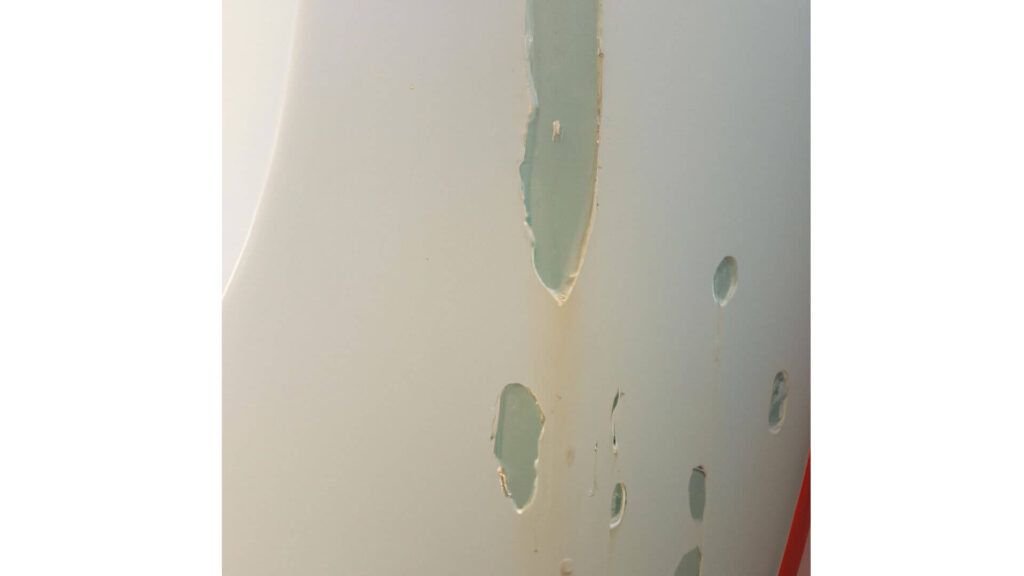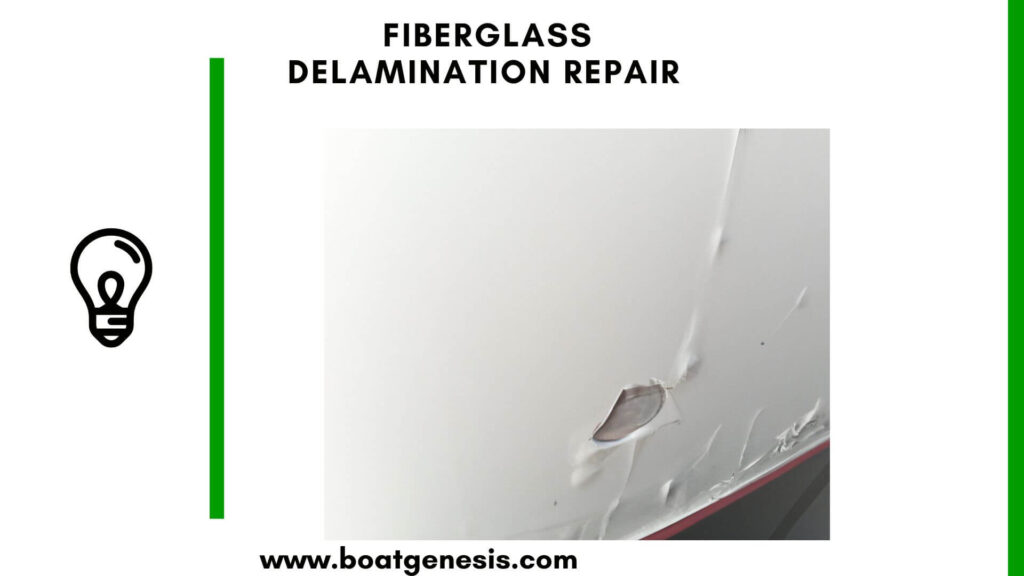Delamination in fiberglass is a common issue but it’s not the end of the world. With the right approach, you can fix it up as good as new.
Let’s dive into the nitty-gritty of fiberglass delamination repair.
- Understanding Fiberglass Delamination
- Spotting the Signs
- Fiberglass Delamination Repair Process
- Aftercare
- FAQ
- What is fiberglass delamination?
- What causes fiberglass delamination?
- How can I tell if my fiberglass has delaminated?
- Can delamination be prevented?
- Is it possible to repair delaminated fiberglass myself?
- How long does it take for a delamination repair to cure?
- Will a repair be as strong as the original fiberglass?
Understanding Fiberglass Delamination
Before we get our hands dirty, it’s crucial to understand what delamination is.
Simply put, it’s when the layers of fiberglass separate from each other or from the core material. This can happen due to water intrusion, impact, or just wear and tear over time.
Spotting the Signs
Keep an ear out for a dull sound when you tap on the fiberglass. This can indicate that delamination is lurking beneath the surface.
Visually, you might see bubbling or areas where the fiberglass seems to have pulled away from its backing, as shown in the image below.

Fiberglass Delamination Repair Process
The repair process can vary, but let’s walk through a general approach to fixing delaminated fiberglass:
Step 1: Prep the Area
Start by cleaning the area thoroughly. Any dirt or grime can interfere with the repair, so it’s important to start with a clean slate.
Step 2: Remove Damaged Material
Next, you’ll need to remove any damaged fiberglass. This might involve cutting or grinding away the affected area until you reach solid material (structural fiberglass).
Step 3: Dry It Out
Moisture is often the culprit behind delamination. Make sure the area is completely dry before proceeding. This might take some time, but it’s a critical step.
Step 4: Fill and Seal
Now it’s time to fill in the gaps. Depending on the extent of the damage, you might use epoxy resin, which is a common recommendation for this kind of repair.
Carefully apply the resin, ensuring it gets into every nook and cranny.
Step 5: Reinforce
After the resin, add layers of fiberglass cloth or mat to reinforce the area. Make sure to saturate the fabric with resin for a strong bond.
Step 6: Finish It Off
Lastly, sand the repaired area until it’s smooth and flush with the surrounding surface.
You can then paint or gelcoat the area to match the rest of the boat gel coat.
Aftercare
Once repaired, it’s important to protect the area from future damage.
Regular inspections and maintenance can go a long way in preventing delamination from rearing its head again.
FAQ
What is fiberglass delamination?
Fiberglass delamination occurs when the layers of fiberglass material separate from one another or from the core structure. This separation can compromise the integrity and strength of the material.
What causes fiberglass delamination?
Delamination can be caused by a variety of factors including water intrusion, poor initial bonding, impact damage, or thermal expansion and contraction that stresses the bond over time. It can also be caused by physical stress on the fibreglass surface.
How can I tell if my fiberglass has delaminated?
One common method is to tap on the surface with something like a plastic hammer. A solid, non-delaminated area will produce a sharp, high-pitched sound, while a delaminated area will have a dull, low-pitched thud.
Can delamination be prevented?
Yes, to some degree. Regular maintenance, ensuring proper seals and coatings, and avoiding impacts or excessive weight on fiberglass surfaces can help prevent delamination.
Is it possible to repair delaminated fiberglass myself?
Yes, with the right tools and materials, you can perform fiberglass delamination repairs yourself. However, for extensive damage or if you’re not confident in your abilities, it’s best to seek professional help.
How long does it take for a delamination repair to cure?
Curing times for epoxy resins and other repair materials can vary. It’s crucial to follow the manufacturer’s instructions, but generally, it can take anywhere from several hours to a full day for the repair to fully cure.
Will a repair be as strong as the original fiberglass?
If done correctly, a repair can restore much of the original strength to the fiberglass. Using high-quality materials and following proper repair procedures are key to achieving a strong, long-lasting repair.
Remember, routine checks and maintenance are your best defense against fiberglass delamination.
Keep your fiberglass clean, dry, and well-protected, and you’ll enjoy its strength and durability for years to come.

Founder of BoatGenesis, Warren has hands-on experience in fiberglass boat repairs, marine equipment testing, and powerboat building. Learn more about Warren.




